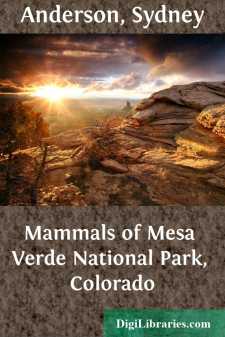Categories
- Antiques & Collectibles 13
- Architecture 36
- Art 48
- Bibles 22
- Biography & Autobiography 813
- Body, Mind & Spirit 142
- Business & Economics 28
- Children's Books 15
- Children's Fiction 12
- Computers 4
- Cooking 94
- Crafts & Hobbies 4
- Drama 346
- Education 46
- Family & Relationships 57
- Fiction 11828
- Games 19
- Gardening 17
- Health & Fitness 34
- History 1377
- House & Home 1
- Humor 147
- Juvenile Fiction 1873
- Juvenile Nonfiction 202
- Language Arts & Disciplines 88
- Law 16
- Literary Collections 686
- Literary Criticism 179
- Mathematics 13
- Medical 41
- Music 40
- Nature 179
- Non-Classifiable 1768
- Performing Arts 7
- Periodicals 1453
- Philosophy 64
- Photography 2
- Poetry 896
- Political Science 203
- Psychology 42
- Reference 154
- Religion 513
- Science 126
- Self-Help 84
- Social Science 81
- Sports & Recreation 34
- Study Aids 3
- Technology & Engineering 59
- Transportation 23
- Travel 463
- True Crime 29
Neotropical Bats from Northern Mexico
by: Sydney Anderson
Description:
Excerpt
Tropical fruit-eating bats of the genus Artibeus reach their northern limits on the lowlands of the eastern and western coasts of México. Recent students have placed the species of Mexican Artibeus in two groups; one includes bats of small size and one includes bats of large size (Dalquest, 1953:61; Lukens and Davis, 1957:6; and Davis, 1958:163). Three of the small species (A. cinereus phaeotis, A. aztecus, and A. turpis nanus) and three of the large species (A. hirsutus, A. jamaicensis jamaicensis, and A. lituratus palmarum) have been reported as far north as Jalisco along the west coast. A. cinereus phaeotis and A. turpis nanus are known from as far north as southern Sinaloa, and A. hirsutus is known from as far north as southern Sonora (Hall and Kelson, 1959:140, 141). Additional specimens of A. hirsutus from Sonora, Sinaloa, and Chihuahua, and specimens of A. lituratus and A. jamaicensis from Sinaloa that extend the known ranges of these two species northward are reported here; data on variation, distribution, and reproduction concerning these three species are included. Also, specimens of Sturnira lilium and of the genus Chiroderma from Chihuahua that extend their known ranges northwestward are reported.
Support for field work that yielded the specimens reported came from the National Science Foundation, the American Heart Association, Inc., and the Kansas University Endowment Association. Catalogue numbers of The University of Kansas Museum of Natural History are cited. The latitude (N) and longitude (W) are recorded to the nearest minute for each locality mentioned.
Artibeus lituratus palmarum J. A. Allen and Chapman.—Specimens from Eldorado (24°19', 107°20'), Sinaloa, extend the known range of the species approximately 265 miles northwestward from Huajimic (21°37', 104°21'), Nayarit. Skins and skulls of 11 specimens (75211-75221, 7 males and 4 females) taken on November 13, 1957, 1 mi. S Eldorado, were prepared by William L. Cutter. Skeletons of 12 specimens (75222-75233, 3 males and 9 females) from Eldorado were obtained by Cutter on the same day. None of the 13 females was pregnant. One specimen (75211, female) is immature; it has open phalangeal ephiphyseal sutures (as do four other larger individuals); this specimen measured 83 mm. in total length, weighed 45 grams, and has a skull 26.6 mm. in greatest length, 22.4 mm. in condylocanine length, 13.4 mm. in lambdoidal breadth, and has unusually small second (last) upper molar teeth, each having about one half the occlusal area of the M2 of the average adult in the series. None of the 23 specimens has a third upper molar. All except one have both third lower molars; one (75233) lacks the third lower molar on both sides of the jaw. Facial stripes vary from conspicuous to inconspicuous, but are evident in each of the 11 skins. The two skins having the darkest pelage are both of males and are the only two skins having open epiphyseal sutures. Five adult males and three adult females are represented by skins. Three of the male skins are slightly darker and less reddish than those of the three females, and the contrast between paler neck and shoulders and other parts is slightly less marked. The other two males are paler and more rufous than the three females; the palest and most rufous of these two males is an old individual having well-worn teeth. Dichromatism is not correlated with age or with sex in this series, which, therefore, differs from specimens reported by Lukens and Davis (1957:9) who observed that dichromatism was correlated with sex. In size, as shown in measurements below, in darkness of ventral pelage, and in cranial features the specimens from Sinaloa agree with those from Guerrero, and differ from specimens of Artibeus jamaicensis, in the ways described by Lukens and Davis (loc. cit.).
Average measurements of males and females do not differ significantly. The following are average and extreme measurements in millimeters of 17 adults (lacking epiphyseal sutures): total length, 93.4 (90-99); length of hind foot, 19.8 (19-21); length of ear, 23.8 (23-26); length of forearm, 65.2 (60.1-70.6); greatest length of skull, 29.24 (28.0-30.2); condylocanine length, 25.25 (24.2-26.4); lambdoidal breadth, 15.92 (15.3-16.6); postorbital constriction, 6.29 (5.8-6.9); and weight (in grams), 63.2 (51-69)....








